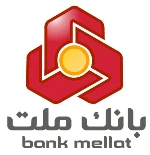- صفحه نخست
-
دسته بندی ها
- فنی مهندسی
- علوم پزشکی
- علوم انسانی
-
عمومی
- کتاب
- وب و برنامه نویسی
- نرم افزار
- پاورپوینت
- علوم پایه
- نمونه سوال
- پرسشنامه
- گزارش تخصصی
- طرح کارآفرینی
- مقاله ترجمه شده
- تم و قالب
- موبایل و فایل فلش
- گرافیک
- فیلم و انیمیشن
- کنکور
- فرم و مستندات
- تحقیق دانش آموزی
- کارآموزی
- گوناگون و متفرقه
- نمونه سوال
- طرح درس
- اقدام پژوهی
- مبانی نظری و پیشینه تحقیق
- طرح درس
- طرح جابر
- فایلهای گرافیکی
- حل المسائل
- فرمول تولید مواد
- لپ تاپ
- تحقیق
- تماس با ما
- درباره ما
- پیگیری خرید
- مقالات آموزشی
- راهنما



